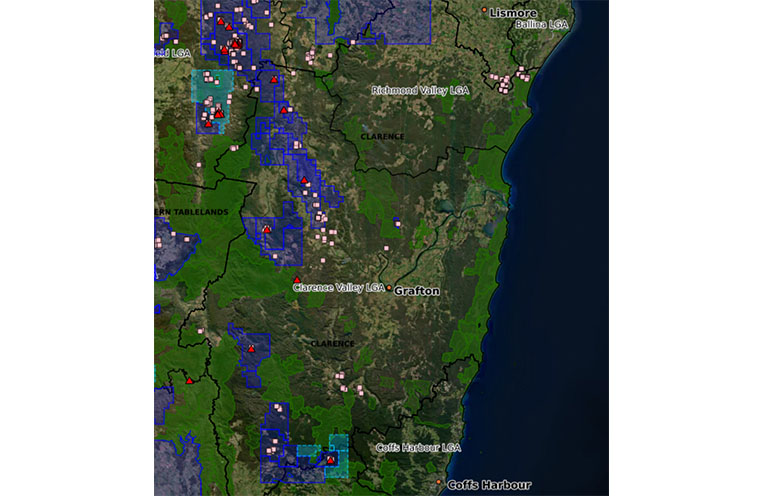
THE Clarence Catchment Alliance (CCA) and Clarence Valley Council (CVC) are calling for immediate and stronger protections against the threat of escalating mineral mining.
Both groups say that NSW regulations fail to protect critical water sources.
The NSW Government is implementing a new Targeted Assessment Program (TAP) to assess how mines manage surface and groundwater, however the CCA says it falls dangerously short.
CCA Coordinator Shae Fleming, said, “The NSW Government accepts contamination as inevitable.
“The TAP focuses on limiting contamination rather than preventing it. That is not protection. That is permission to pollute.”
The CCA presented CVC with evidence of 44 active exploration licences (ELs) and two exploration licence applications (ELAs) across the Clarence Catchment.
Two ELAs have been approved in the past few weeks, only a matter of months after being lodged.
CCA says current exploration across the Clarence Catchment is targeting copper, cobalt, bauxite, silver, gold, antimony and tungsten.
This early exploration, they say, exposes water systems to drilling fluids, fuel spills, and heavy metal cuttings including antimony, arsenic, lead, cadmium and copper.
When minerals are disturbed and brought to the surface they react with air and water, creating acid that lowers pH and releases toxic metals into creeks, rivers and drinking water.
Full mining uses highly toxic chemicals like cyanide, sulfuric acid, caustic soda and diesel fuels, many of which are dangerous even at trace levels, and extremely difficult to remove once in waterways.
Following a joint meeting on Tuesday 10 June, Clarence Valley councillors expressed serious concern at the extent of mining expansion and the need for decisive action.
Mayor Ray Smith said it was “alarming”.
“It is essential that Council, in collaboration with the Clarence Catchment Alliance and the broader community, continues to express its total opposition to any mining activity within the Clarence Catchment.”
Cr Lynne Cairns agreed, “The number of exploration licences and exploration licence applications that threaten the
rivers and tributaries in the area is a real eye-opener.”
“I believe it is paramount that Council collaborates with CCA and lobbies the NSW Premier, relevant ministers, key departments and agencies, to ensure legislation is amended to ban mineral mining in the region.”
Cr Shane Causley said, “The Clarence River is a lifeline for our community, providing essential drinking water, sustaining agriculture, supporting the fishing industry, and attracting tourism that benefits local businesses.
“Mining poses a direct threat to all of these.”
The CCA is now calling for Clarence Valley Council to formally coordinate with neighbouring councils including
Coffs Harbour, Bellingen, Byron, Kyogle, Glen Innes Severn and others, to lead a region-wide lobbying position.
Ms Fleming said, “Mining falls under the state government’s jurisdiction, of course, but Council’s leadership – especially when concerned with drinking water – is critical.
“The evidence is overwhelming, the risk is growing, and both the community and councils know that once these rivers are contaminated, they cannot be cleaned,” she said.
“The time to legislate permanent protection is now.”
By Andrew VIVIAN


